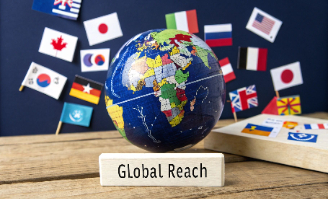The Last 30%: Why AI Translation Still Fails Global Businesses
Release date :2025-07-16
The rise of AI-powered translation tools has revolutionized how global teams collaborate across languages — enabling faster drafts, cost savings, and immediate multilingual versions of content.
But as promising as these advancements are, relying solely on AI for translation is still a risky shortcut.
Having led numerous multilingual projects for clients in manufacturing, healthcare, and technology, I’ve seen a clear pattern:
AI brings you most of the way there — but the last stretch requires human expertise.
In this insight, I’ll explain where AI translation falls short in real business scenarios, and how language professionals are evolving to become indispensable guides in this new hybrid landscape.
1. Words Are Not Enough: AI Struggles to Capture Intent and Audience Nuance
Top-tier AI models excel at processing language but don’t truly understand why a message matters.
Take a recent example: A global tech company used AI to translate its product launch presentation into Chinese. The translation was fluent and technically accurate, but the tone felt flat — emotional impact and persuasive elements were lost.
Similarly, when a manufacturing client deployed AI for localizing internal safety training, the terminology was correct, but some phrases sounded too casual — a serious concern when clarity and tone are critical to workplace safety.
These issues aren’t simply translation errors. They stem from AI’s inability to grasp context, brand personality, and audience expectations.
TechCrunch:Google AI Translation Breakthroughs 2025
2. The Crucial Last 30%: Precision Demands Human Judgment
AI can quickly produce roughly 70% of a usable translation, but that last 30% — the fine-tuning — requires seasoned linguistic judgment.
We partnered with a healthcare provider on compliance documents translated by AI drafts. Reviewers found inconsistent phrasing and formatting that risked clinical misunderstandings. Addressing these issues consumed more time than if a structured human-led process had been in place from the start.
In regulated fields, near accuracy is not enough — the difference between “almost right” and “fully compliant” can have major consequences.

3. Translation Is a Complex System, Not Just a Task
While AI can handle straightforward translation, it cannot:
Maintain consistent terminology across teams and regions;
Adapt style and tone to fit brand guidelines and cultural norms;
Identify legal or regulatory risks hidden in phrasing;
Coordinate revisions with marketing, legal, and technical departments.
Human experts design and manage integrated translation workflows that blend AI efficiency with editorial rigor and domain knowledge.
For example, during a recent cross-border product certification, AI generated initial drafts, but human reviewers detected regulatory-risk phrases that could have delayed approval — a safeguard only expert linguists provide.
4. Language Professionals Are Evolving Into AI-Savvy Strategists
At Landelion, our translators embrace AI as a powerful tool — not a replacement.
We create:
Tailored AI prompt templates by project type;
Comprehensive terminology databases aligned to industry standards;
Quality assurance pipelines mixing AI output with human validation;
Risk management frameworks for different content categories.
Our role is to unlock AI’s potential while ensuring translations meet your business goals.
5. What Business Leaders Really Want: Trust, Not Just Translation
Executives aren’t asking:
“Is this translation grammatically correct?”
They want to know:
“Can we confidently share this with our partners in Japan?”
“Is this ready for our global website?”
“Will this comply with legal requirements in Germany?”
Today’s translation extends beyond linguistic accuracy — it’s about brand integrity, compliance, and risk mitigation.
AI accelerates workflows, but the ultimate responsibility remains human.
Final Thoughts
We’re not witnessing AI replacing translators — but the emergence of hybrid workflows where experts curate, audit, and contextualize AI-generated content.
In a fast-paced world, credibility is the key differentiator.
Expert language support — combining AI’s speed with human insight — is more essential than ever.
Interested in how Landelion helps you conquer the “last 30%”?
Connect with us or visit landelion.us to learn more.
